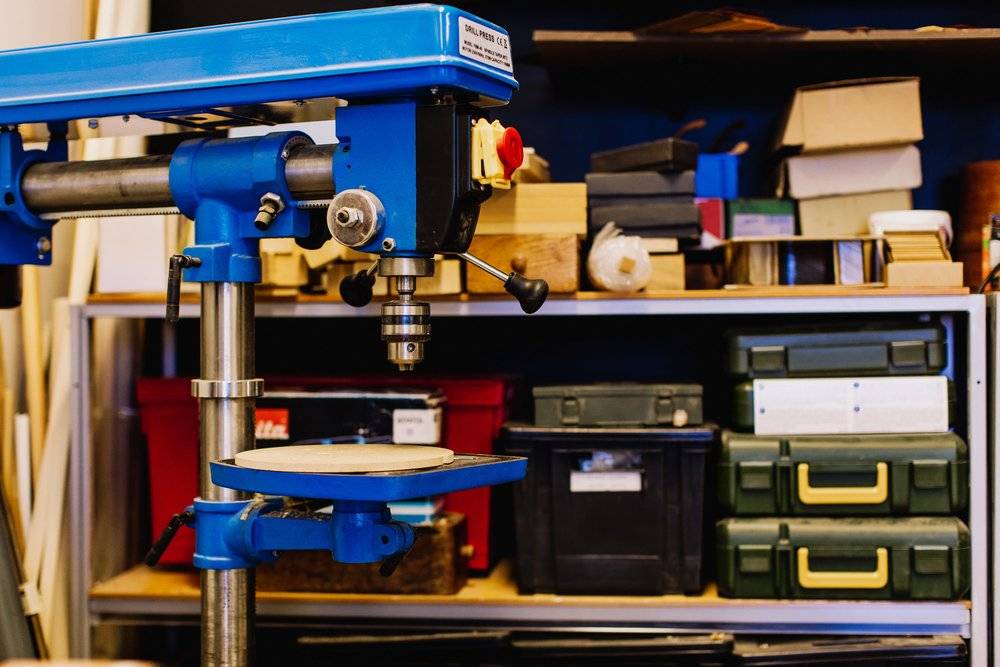The ultimate guide on how to outsource manufacturing
Explore how to outsource manufacturing, the risks of outsourcing, and the tools that can help growing manufacturers keep their production under control.
Team Katana

You had that nightmare again.
The nightmare is where you’re hidden away in your workshop because an angry mob gathered outside as you could not fulfill their orders on time. You tried, you really did, but you’re just one person. How is it even possible to leave every customer satisfied when your business is quickly outgrowing you?
Finally, the windows and doors of your business can’t hold off the negative feedback of your customers, and they break open while your company begins to crumble. This nightmare doesn’t have to be a reality.
All you need to know is how to outsource manufacturing and make it work for your business.
There are several reasons a manufacturer should consider outsource manufacturing:
- You need to redistribute resources to free up time
- You’re a designer but don’t know how to build the product and need a partner
- You’re not equipped to build a specific component needed to finish your product
Maybe a reason to outsource could be beyond your control.
Currently, many places are experiencing a drought of skilled workers to choose from in the talent pool. Worst of all, this issue isn’t going away anytime soon. And that’s not including any of the other manufacturing challenges your business might encounter.
You might be able to handle manufacturing and running your business all by yourself now, but eventually, to scale, you’re going to need to find the extra resources elsewhere to be able to handle the increase in sales and mass production.
This is where outsource manufacturing comes into play.
In this article, we look at what is outsource manufacturing, how to make outsource manufacturing make sense, the risks associated, and how to get the ultimate set-up while you outsource your production.
What is outsource manufacturing?
Outsource manufacturing, or contract manufacturing is contracting with a third party to produce goods or services. This can be done domestically or internationally, saving businesses time and money — outsourcing can also help businesses stay competitive by focusing on their core competencies.
How much it costs to outsource manufacturing depends on the company you start a contract with, the political atmosphere, the manufacturing company’s demand, and the transportation cost.
Outsource manufacturing is the process of one business hiring a third-party company to perform the services which a company’s employees traditionally carry out. Most outsource manufacturing usually occurs in foreign countries with the primary goal of lowering costs, particularly minimizing labor costs and manufacturing overheads. This is because it can be cheaper for a business to hire the services of a third-party company instead of hiring its own employees.
Besides reducing costs, a business may also consider outsourcing manufacturing to increase production or reallocate resources.
Supporters of outsource manufacturing believe that implementing this tactic in a business gives an incentive for the company to allocate resources to where they would be most effective, and outsourcing even helps maintain a healthy free market on a global scale.
When you outsource, you can save money on labor costs since the manufacturer will likely be able to produce products at a lower cost than you could. You also don’t have to worry about setting up and maintaining your own manufacturing facility.
Additionally, outsourcing can focus on your core business and leave the manufacturing process to the experts. This can help you save time and reduce your risk of mistakes.
Finally, outsourcing allows you to scale your production up or down easily. If demand for your product increases, you can quickly ramp up production; if demand drops, you can easily reduce your output without laying off workers or closing down a factory.
All in all, there are many reasons to outsource manufacturing. If you’re considering it, do your homework and find a manufacturer that can meet your needs.
Critics believe the cons of outsourcing take away domestic job opportunities for local workers, especially within the manufacturing and textile industries. However, we’ll investigate this more when discussing outsourcing manufacturing companies’ risks. For now, let’s look into how to outsource manufacturing.
How to outsource manufacturing

By following Dr. Hart-Smith’s advice, companies looking to outsource manufacturing should avoid the grave mistakes of bigger companies like Boeing and Apple. Read on to know more.
At a 2001 conference, Dr. L. J. Hart-Smith, an aerospace engineer, presented a memo explaining the huge risks airplane manufacturer Boeing took when subcontracting 30% of the manufacturing on the Boeing 787 Dreamliner. A plane that would later be plagued with embarrassing safety issues, forcing governments worldwide to ground the aircraft. Unfortunately for Boeing, they didn’t heed Dr. Hart-Smith’s warnings.
Not only can we learn from their mistakes, but Dr. Hart-Smith also put together a set of rules manufacturers should follow when deciding to outsource manufacturing.
1. Monitor production
You need to have a hawk’s eye and be vigilant over your outsource manufacturing. The idea is to minimize the manufacturing cost of the entire product. So, make sure you don’t isolate a part of production or a subassembly as one cost reduction, but keep in mind the product’s entire workflow. Outsourcing production strategically can be more cost-effective if the whole workflow has been considered instead of minimizing costs in one area.
2. Nothing is perfect
Perfect efficiency isn’t achievable for companies looking to outsource manufacturing. So make sure not to spend too much time trying to make it perfect.
3. Keep-the-home-fires-burning
Try to keep some production in-house. Better yet, outsource some production but bring in people with the knowledge or workers you can train. This ensures you have the internal expertise to keep producing and fulfilling orders should something go wrong.
Don’t scale down your business to save more or have outsource manufacturing at 100%. You’ll sacrifice irreplaceable critical skills making you dependent on manufacturing companies that outsource.
4. Don’t be greedy
Your goal shouldn’t be just to reduce costs. Yes, it can certainly be an objective when looking to outsource manufacturing. Still, the main reason should be that the contractor has better facilities than you, which can improve your product quality.
5. Other costs increase
Always remember that companies looking to outsource manufacturing will face higher manufacturing lead times, and other costs will increase, such as transportation. Be wary of this when you begin to outsource.
6. Importance of precision in early tasks
Finesse the initial stages of production of a product to reduce the larger subsequent tasks.
7. Avoid emulating other companies
Understand that cost-saving techniques that work for other manufacturers that outsource may not work for you. Examine and develop a model that works for you.
8. Learn to listen, listen to learn
If you get advice from employees or other manufacturers in your market on how to reduce costs, take it. They will have more insight into how your business will perform better than an outside consultant.
You might be thinking, “This is all very well and good. But, how do I go about choosing a manufacturer?” There can be consequences to choosing the wrong one, and you will always need to research before you start to outsource manufacturing.
But, as a rule of thumb, always:
-
Try to visit the factory
You can determine if a company is worthy of handling your product. You can assess their employees’ skills and verify their equipment quality with your own eyes. -
Check experience and certificates
If a company has just started up and you’re going to be their first contract, be selfish, and move on. Their inexperience could lead to costly errors for you, and not them. -
Research where they’re located
For example, by outsourcing manufacturing to China to different regions, you can benefit from different industry tax rates. You’ll find it’s cheaper for tech companies to outsource to the South. At the same time, it’s more advantageous for manufacturing companies to go North.
Also, check the regulations of the country you’re based, as they might have tariffs on another country which could affect you.
Knowing these rules when choosing to outsource manufacturing will help you in the long run. If you follow Dr. Hart-Smith, you should be okay, but there are also risks you need to understand about outsourcing company contracts.
The risks for manufacturing companies that outsource

Manufacturing companies that outsource have some risks they must take on when doing business this way. One of the main ones is having to take responsibility should your partner cut corners.
The exact cost of outsource manufacturing might not be as simple as how much capital it will take to work, but what will it do to your brand’s reputation?
The current manufacturing trends and predictions for consumer spending habits suggest that people want to know exactly how and where their products are produced. This means that people are more likely to purchase from companies that manufacture goods in-house. When you outsource manufacturing, you should get to know your contractors to avoid being subject to criticism if it’s discovered that those contractors, for example, mistreat their staff.
Be sure to keep up to date with world politics. For example, in 2018, America and China engaged in a tariff war. This affected a lot of businesses that had operations in either country involved.
If outsource manufacturing is necessary, try to limit the amount of production that goes to contractors. The more production you outsource, the more difficult it becomes to follow your production quality control checklist on your products before selling them.
Then there comes the issue of trust, as in the past, there have been cases of espionage, where outsource manufacturing companies have stolen product designs and ideas to produce them independently.
The short video below, even though it demonizes outsource manufacturing, gives a very nice breakdown of the risks one could face:
However, don’t be scared, knowing these risks means you can have solutions put in place now, should they occur.
What about us ambitious manufacturers?

If you’re a manufacturer struggling to keep up with orders all by yourself, you’re probably screaming at this article, “This doesn’t apply to me, it only concerns large-scale corporations.”
But you’d be wrong to shout that.
You don’t have to be searching for manufacturing companies that outsource on a large scale. Heck, you don’t even have to look outside of your country’s borders. As mentioned earlier, it all depends on what your goals are when deciding to outsource manufacturing.
For example, let’s say you’re looking to outsource jewelry manufacturing because you’re a designer but don’t have the capabilities to produce your products.
Outsource manufacturing is certainly an appropriate tactic to take, and you can still even have control of production. But that means teaming up with a manufacturer, purchasing material, and arranging the supply chain requirements. But, to be able to pull off this type of outsource manufacturing you’re going to need to find a tool that can handle supply chain management for makers.
How to outsource manufacturing with Katana

How to outsource manufacturing doesn’t have to be complicated — finding the right tool can make the entire process a breeze.
Manufacturing businesses that take advantage of outsourcing manufacturing turn to software, like Katana, to manage the complexity of running your business via this workflow. Using the above example of an artist using outsource jewelry manufacturing to create their product, Katana allows the designer and the manufacturer to see the status of delivery of materials or the status of production, offering a clear channel of communication and a way to handle project management with ease.
Or perhaps you’re a jewelry maker who produces some products in-house but uses outsource manufacturing to keep up with fulfilling orders on time.
Katana allows a manufacturing business to track the status of manufacturing orders at multiple locations and track the inventory levels at different warehouses.
These functionalities allow entrepreneurs to retain complete control of their manufacturing business processes regardless of whether they manufacture products in-house or not.
How can Katana help you with outsource manufacturing

With Katana, you can support a fully or partially outsourced manufacturing workflow — perfect for if you’re responsible for purchasing and tracking the raw materials sent to your contract manufacturer.
Let’s use an example.
You have silver and gold jewelry inventory that you sell via your US-based Shopify store. You are a passionate jewelry artisan with various designs ready to be brought to life. You outsource manufacturing to two local partners.
When logged into Katana, go into “Settings” and open “Locations”.
With Katana, you can add and manage all your sales and manufacturing locations. Considering our example, you’ll have one main warehouse, which is your Shopify store in Pennsylvania, one manufacturing location in Virginia, and another manufacturing location in New Jersey.
You can create outsourced purchase orders (OPO) for your outsource partners based on your sales orders. You’ll see your finished goods and raw materials inventory and create purchase orders for missing materials.
It’s that simple.
This allows you to organize your entire business and keeps you in the loop during manufacturing. However, Katana goes beyond being able to just monitor and manage manufacturing operations at different locations. Here’s what else you can do with Katana implemented into your business.
1. Finished goods and raw material inventory levels
Not only can you track your inventory at different manufacturing locations, Katana automatically takes available finished products or raw materials and allocates them to orders.
These real-time updates of your inventory movements and production operations give you complete control of your outsource manufacturing from one easy-to-understand visual platform.
2. Your bill of materials or product recipes
You can create and save your bill of materials (BOMs) on Katana, which will let you know how much you need to order when creating an outsourced purchase order for your contractor.
3. Multichannel sales support
Selling on WooCommerce, Shopify, or any other e-commerce platform? No trouble.
Like managing manufacturing operations at different locations, Katana allows you to manage various sales channels and separate your inventory levels for different sale locations.
Katana can also integrate with your accounting software, such as QuickBooks Online, meaning you can centralize your entire business to one platform.
4. Manufacturing cost calculations
You can easily track and edit the operation cost of outsourced manufacturing if the service fee for an outsourced operation changes from the default amount after your contractor has invoiced you.
Outsource manufacturing is certainly a smart tactic to implement, especially if you follow Dr. Hart-Smith’s advice and find a production scheduling software that can support a business that uses outsourced manufacturing like Katana.
Why not see for yourself? Request a demo, so you can see how it’s a match made in heaven for any entrepreneur looking to outsource manufacturing. We hope you found this article on how to outsource manufacturing useful, and if you have any questions, please don’t hesitate to get in touch.
Until next time, happy manufacturing.
Team Katana
Table of contents
Get inventory trends, news, and tips every month
Get visibility over your sales and stock
Wave goodbye to uncertainty with Katana Cloud Inventory — AI-powered for total inventory control